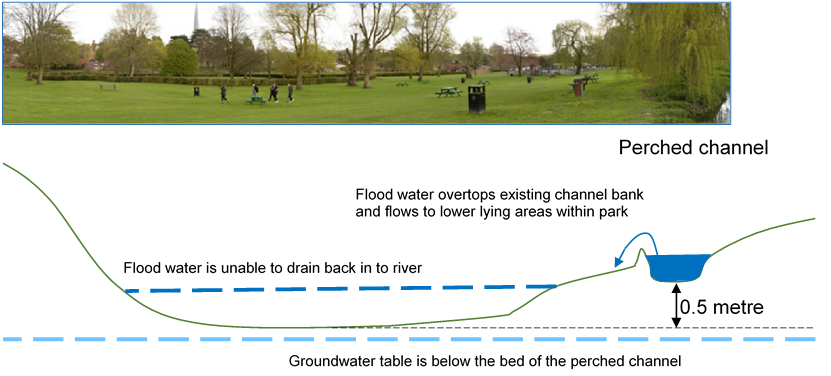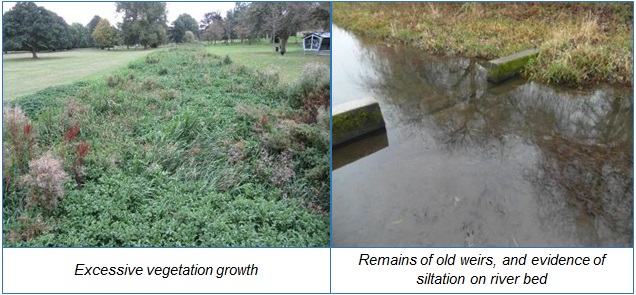How can we revitalise the River Gade through Gadebridge Park?
Published responses
View submitted responses where consent has been given to publish the response.
Overview
This Environment Agency consultation is now closed. To view updated information about the Gadebridge Park river restoration project, please visit our information page at https://consult.environment-agency.gov.uk/hnl/gadebridge-park-information-page
--------------------------------------------------------------------------------------------------
The Environment Agency, Dacorum Borough Council and Affinity Water are working in partnership to improve the wildlife, recreational value and environmental resilience (to flooding and dry weather) of the River Gade through Gadebridge Park, Hemel Hempstead.
This is part of Revitalising Chalk Rivers, a wider programme of projects that aims to protect and restore our rare chalk streams. Affinity Water and the Environment Agency lead the programme, working alongside other partners.
Affinity Water have recently completed a project as part of Revitalising Chalk Rivers in the upper section of Gadebridge Park to provide new in channel habitat for aquatic wildlife and improve water quality. Our proposed project through the rest of the park will link up with this work to provide a continuous improved corridor for wildlife and people.
JBA Consulting carried out an initial feasibility study for Gadebridge Park from 2016 to 2018 in consultation with project partners and key stakeholders. The outcome of this study can be seen in our proposals for the river restoration scheme.
Thank you for your views!
We ran a public consultation for the project proposals from 20 July to 30 September 2018.
We would like to thank all of those who took part in our consultation survey.
We have now analysed your responses and published those where consent was given. For a summary of the recent consultation please find our report at the bottom of this page under 'Related'.
Why does the River Gade need restoring?
The River Gade has been significantly impacted by historic channel alterations and currently provides poor habitat and low wildlife diversity. As a result, the watercourse is classified as having a 'poor' ecological status under the European Water Framework Directive (WFD).

The channel through Gadebridge Park sits at a higher level than the valley bottom and as a result is disconnected from its floodplain. Consequently, when flooding occurs in the valley bottom the water remains in the park for long periods of time as it’s unable to flow back into the channel (see figure above).
The River Gade also suffers from low flows due to spring flow which is diverted into an underground tunnel (culvert), pressure from water abstraction and being disconnected from the groundwater table. For a chalk stream, where over 70% of flow is from groundwater, this can have a big impact on both resilience to low flows and also to the wildlife of the channel. Affinity Water plans to reduce their abstraction affecting the River Gade later this year. Our water resources in South East England face pressure from high demand. To make sure there is enough water for people and wildlife, we can all do more to use water wisely.
Having a low gradient, being over-wide and straight has resulted in low variety of flow types, build-up of sediment and excessive vegetation growth. The weir at the Environment Agency Bury Mill Gauging Station also acts as a barrier to fish. All of these impact the wildlife that the channel is able to support.

What has been planned so far?
Our objectives of the river restoration scheme are to:
- Improve the river and the adjacent parkland for wildlife
- Improve the opportunities for amenity and recreation around the river
- Improve resilience to low flow events and climate change
- Improve the wildlife of the river so that it supports Good Ecological Status under the European Water Framework Directive
- Improve floodplain connectivity, but reduce the impact of flooding – i.e. so water can come onto the floodplain when it needs to, but that it doesn’t sit on the parkland for long periods of time
- Address the impact of the gauging station
- Make the channel easier to maintain for the benefit of people and wildlife.
Our proposals include:
- Realignment of the river from downstream of the White Bridge, back to the valley bottom through the park. This will reconnect the river to its floodplain and to groundwater through the area
- Re-routing spring flows, which currently run through a culvert (underground tunnel), into the new channel to provide additional flow to the river, increasing its resilience, particularly in times of low flows
- Replacing the existing Bury Mill gauging station with one on the new channel that will be passable to fish, and have much less impact on the river channel than the present gauging station
- New footpaths, a new bridge across the realigned channel and an informal crossing point over the new channel
- A new wetland / nature area.
(This plan can also be downloaded using the link "Appendix 1" at the bottom of this page).
The image below depicts what the park could look like in future looking south from the White Bridge.
The delivery of this project is due to be part-funded by Environment Agency and Affinity Water.
Further information on the restoration scheme can be found in the documents and links below. However, if you have any further questions please do not hesitate to contact one of the project partners.
Lauren Naish (Environment Agency) gadebridgepark@environment-agency.gov.uk
Claire Covington (Dacorum Borough Council) regeneration@dacorum.gov.uk
Audiences
- Recreational and commercial river users
- Members of the public with an interest in the river, the species and conservation
- Businesses
- Charities
- Statutory organisations
- NGOs
- Members of the public
- Elected representatives, including MPs
- Local councils
- Academics
- Environment Agency customers
- Local authorities
- District and parish councils
- Environmental bodies
- Elected representatives, including MPs
- Water companies
- Members of the public
- Recreational and commercial river users
- Community groups
- Environment Agency colleagues
- Lead Local Flood Authorities
- Members of the public
- Town and parish councils
Interests
- Flood management
- Water resources
- Water quality
- Habitats and wildlife


Share
Share on Twitter Share on Facebook